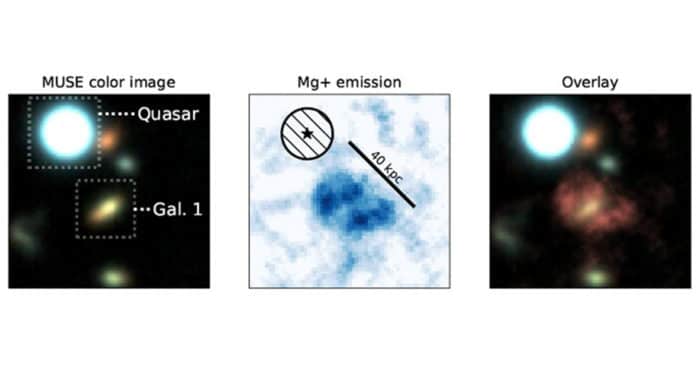One of the significant problems in understanding the formation of galaxies is that around 80% of the baryons that make up the ordinary matter of universes are absent. Many models have suggested that these baryons were expelled from galaxies into intergalactic space by the galactic winds created by stellar explosions.
Using the MUSE instrument from the Very Large Telescope at the ESO, an international research team, led on the French side by the CNRS and l’Université Claude Bernard Lyon 1, generated a detailed map of the galactic wind for the first time.
The map helps reveal where some of the universe’s missing matter is located and to observe the formation of a nebula around a galaxy.
Scientists observed the galaxy Gal1 due to the proximity of a quasar. The quasar guides scientists toward the area of study. They also planned to observe a nebula around this galaxy. At first, the success of this observation was doubtful because of the unknown luminosity of the nebula.
Thanks to the perfect positioning of the galaxy and the quasar and the discovery of gas exchange due to galactic wind, scientists created the map. This enabled the first observation of nebula information simultaneously emitting and absorbing magnesium—some of the universe’s missing baryons—with the Gal1 galaxy.
This type of normal matter nebula is known in the near universe, but their existence for young galaxies information had only been supposed.
Scientists thus discovered some of the universe’s missing baryons, thereby confirming that 80–90% of normal matter is located outside of galaxies. This discovery will help expand models for the evolution of galaxies.
Journal Reference:
- Johannes Zabel et al., MusE GAs FLOw and Wind (MEGAFLOW) VIII. Discovery of a Mgii emission halo probed by a quasar sightline, Monthly Notices of the Royal Astronomical Society (2021). DOI: 10.1093/mnras/stab2165
